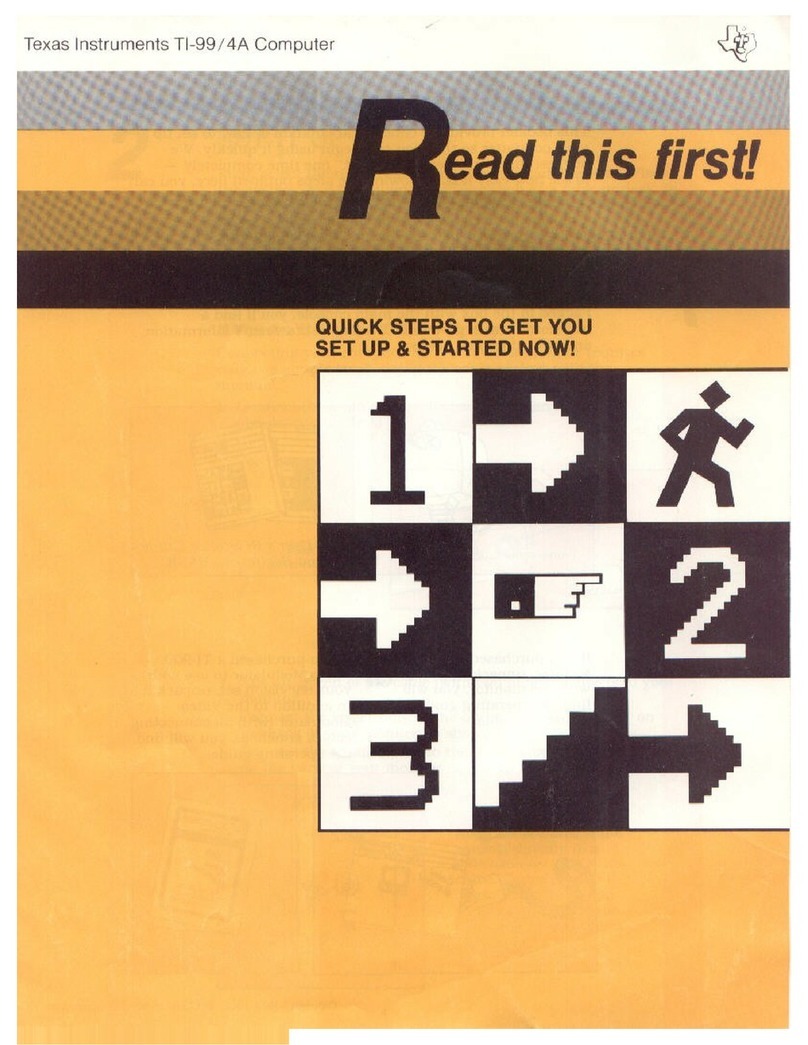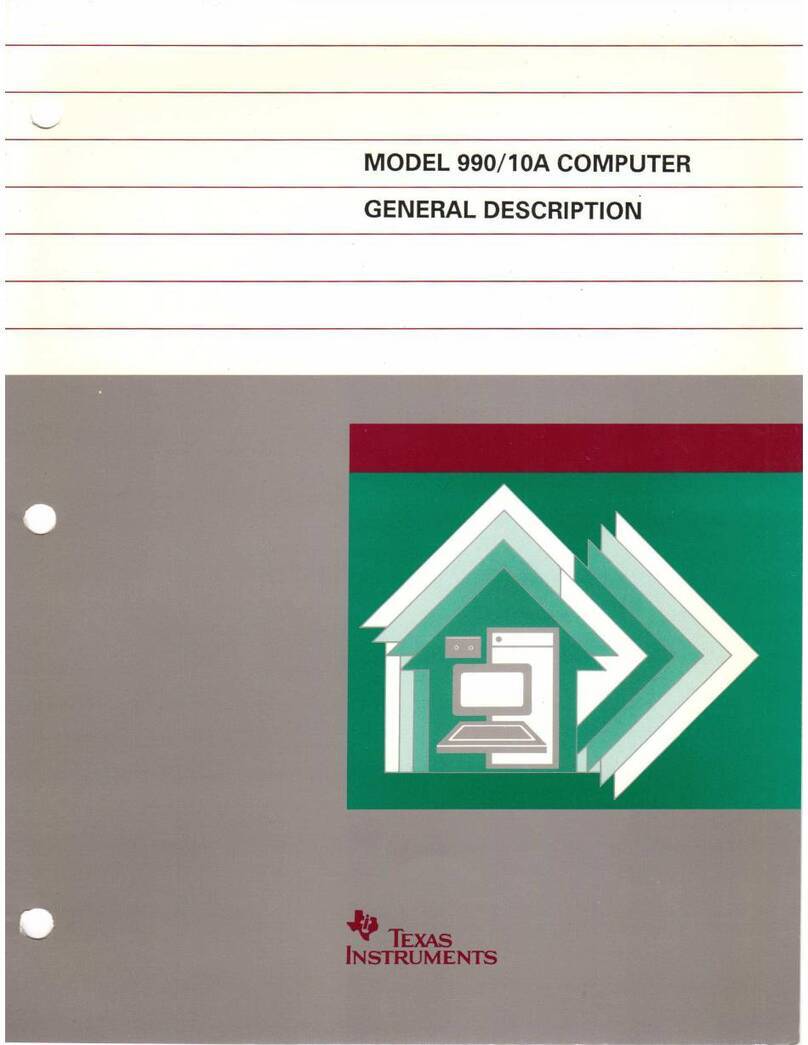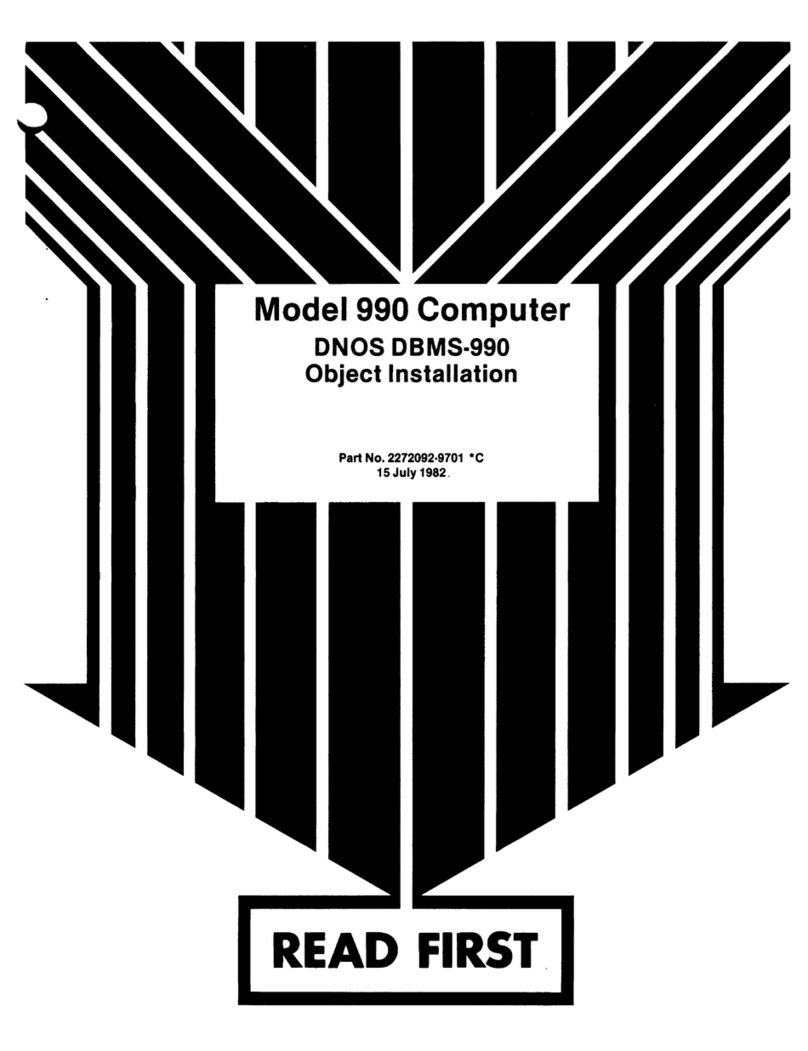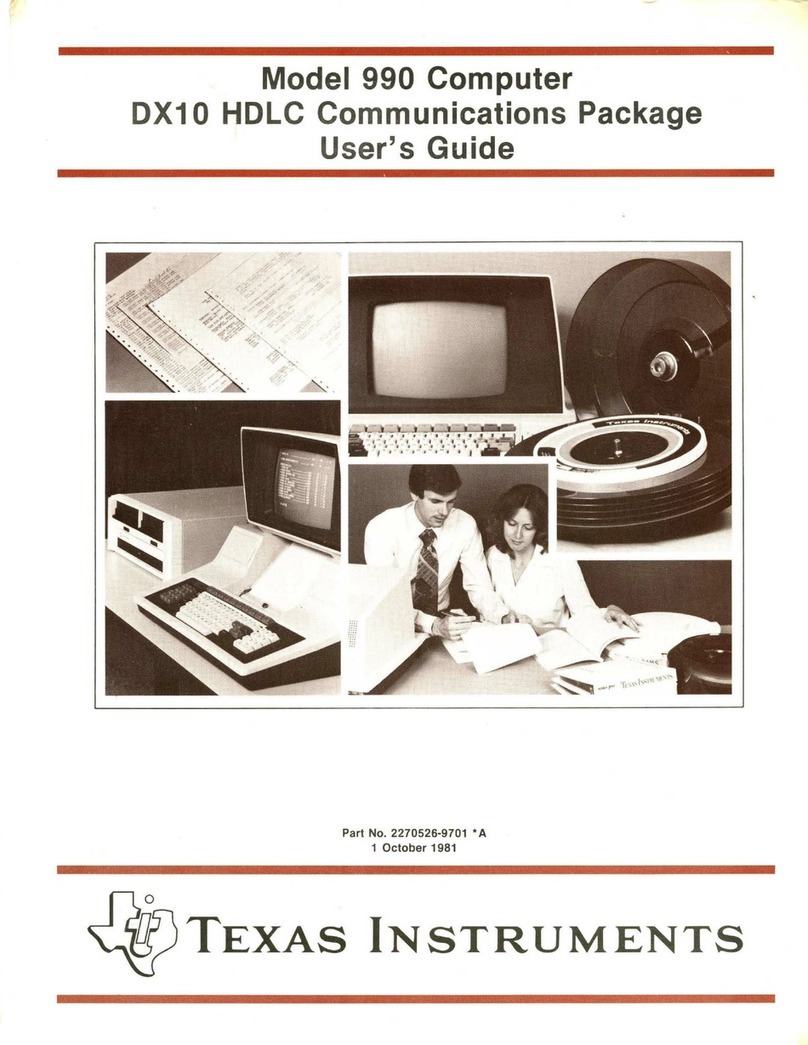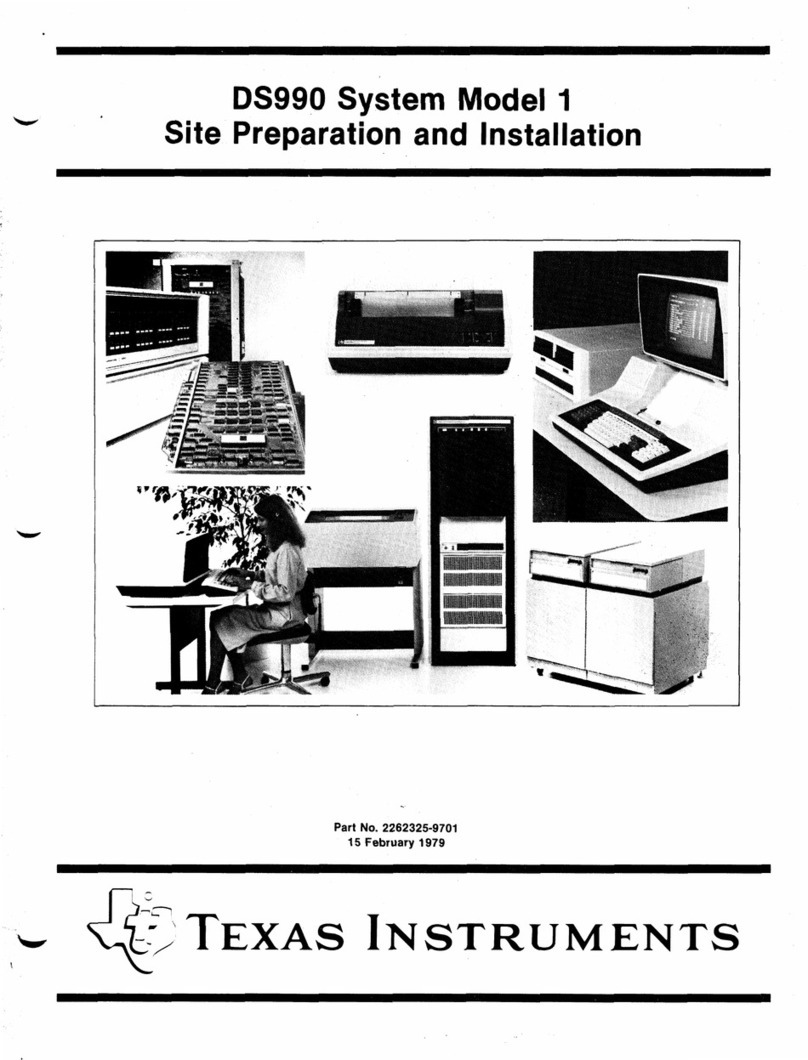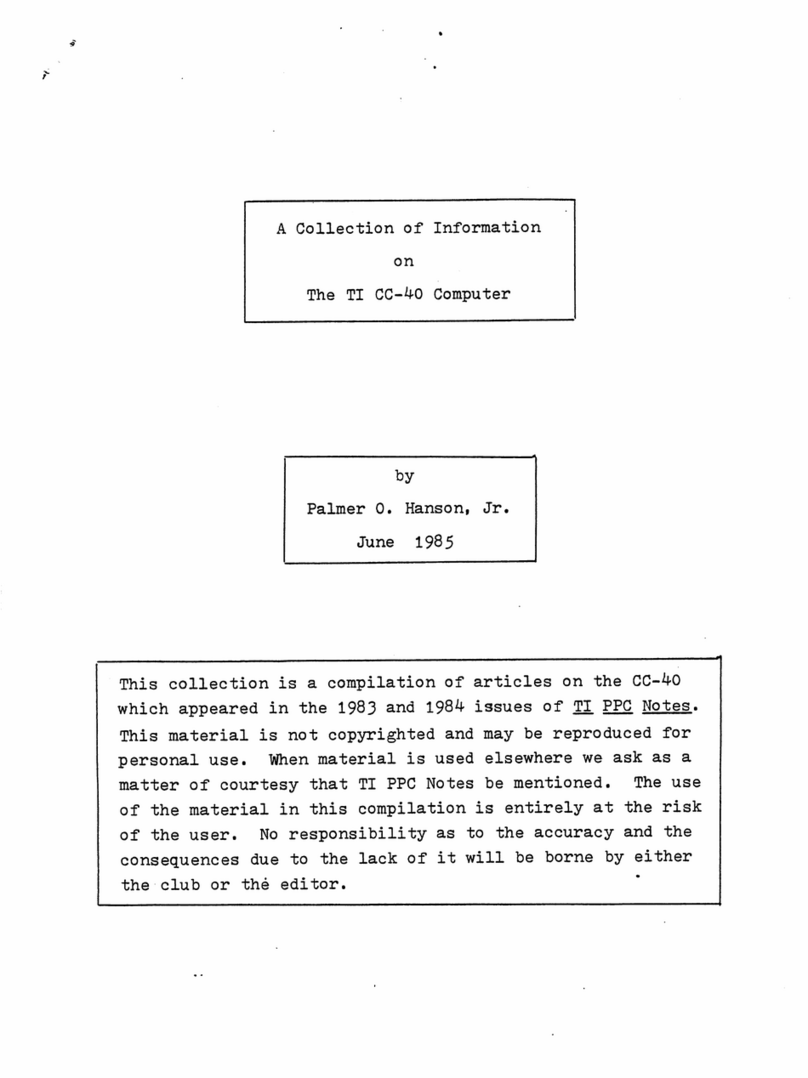
DS990
Software
DS990 software
is
both versatile and efficient.
It
comprehends user requirements in a way not found
in most computers
of
this class.
DXIO
Operating System
Operators interface with the
DXIO
operating system
through Model
911
Video Display Terminals (VDTs)
that provide hierarchical menus with supporting fill-
in-the-blank, prompting, and predefined functions.
More than
170
Texas Instruments-supplied system
commands provide powerful and comprehensive
system control. Users can also provide custom
commands that reflect their application terminology.
A broad range
of
utilities and supporting routines
are built into the system-command structure.
Program memory
is
dynamically allocated.
Resource management
is
enhanced by variable-
location roll in/roll out and task-level priority
assignment.
The DXIO operating system has flexible
file
management. Types of
files
supported include
sequentiai, reiative-record, and muitikey-indexed
files.
The key-indexed method supports a unique real-time,
self-maintenance capability.
Program and Memory Management. The
DXIO operating system
is
a mUltiprogramming
system. User programs that operate under control of
the OX10 system include a composite of tasks,
procedures, and overlays. Programs are installed and
stored in program
files.
When a program
is
activated, its images are loaded into any available
memory area.
An active program can be rolled in and out of
several different locations in memory by the
DXIO
operating system several times during its execution
to efficiently share memory and processor resources.
When in memory and active, a program competes
with other programs for execution time on a user-
defined priority basis. When a program terminates,
the operating system releases all program-owned
resources including files, devices, and memory. This
unique DXIO program structure
is
made possible by
a memory-mapping technique. These advanced
memory- and program-management techniques
provide high processor utilization, resulting in high
levels
of
throughput.
System Command Interpreter. Operators
interface with the
DXIO
operating system through
VDTs via the system command interpreter (SCI).
The SCI
is
a collection of more than
170
procedures
that provide system functions ranging from setting
2
the time of day or initiating compiles to backing up
disks. Commands are
at
the operator's fingertips via
the SCI. This can save
10
to
30
percent of
development effort on major programs. The
completeness and flexibility
of
the functions
performed by the SCI make it without parallel in
the minicomputer market. Many
of
the functions
performed
by
the SCI are found only on main-frame
machines.
Activation
of
SCI commands
is
via a hierarchy
of
command menus made available to all types
of
system terminals. The command menus provide each
terminal on-line command prompts by logical
grouping.
Custom commands can be integrated into the
framework
of
the DXIO operating system. Users can
combine SCI primitives with their own application
language to provide a user interface that
is
unique
to the terminology and customary procedures of the
application.
Interactive Operation. The DXIO operating system
features an excellent interactive user interface for
control of the system through SCI.
All
entries keyed
by an operator are
ffieaningfuHy
prompted. Fieids
are easily edited
by
the operator and are verified
by
the system. The number of prompts, and therefore
time, can be conserved since all arguments for a
command can be entered before the system requests
them by prompt. When a partial list
of
arguments
is
entered, any arguments not already supplied
by
the
operator or default specified are then prompted.
Batch Operation. The background program
at
the
terminal may
be
a copy of the SCI. In this case, the
SCI
is
interpreting commands in the background
(batch processing). Batch input
is
from any
sequentially oriented
file
device but not from the
terminal itself. An operator can initiate batch
processing, query its status, and receive information
concerning its normal or abnormal completion.
Certain interactive commands are inappropriate for
batch operation, but all other SCI commands are
available.
File Management
The
DXIO
operating system provides a file-
management package that includes a complete range
of
file
structures and features. The
DXIO
system can
accommodate many uniquely named data
files
on a
disk cartridge and provides the necessary
management for allocation of disk space to the
files.
The user can specify the amount of space to be
allocated to a
file
or, more frequently, can specify
that space
is
to
be
automatically allocated to the
file
as
it
is
needed.
